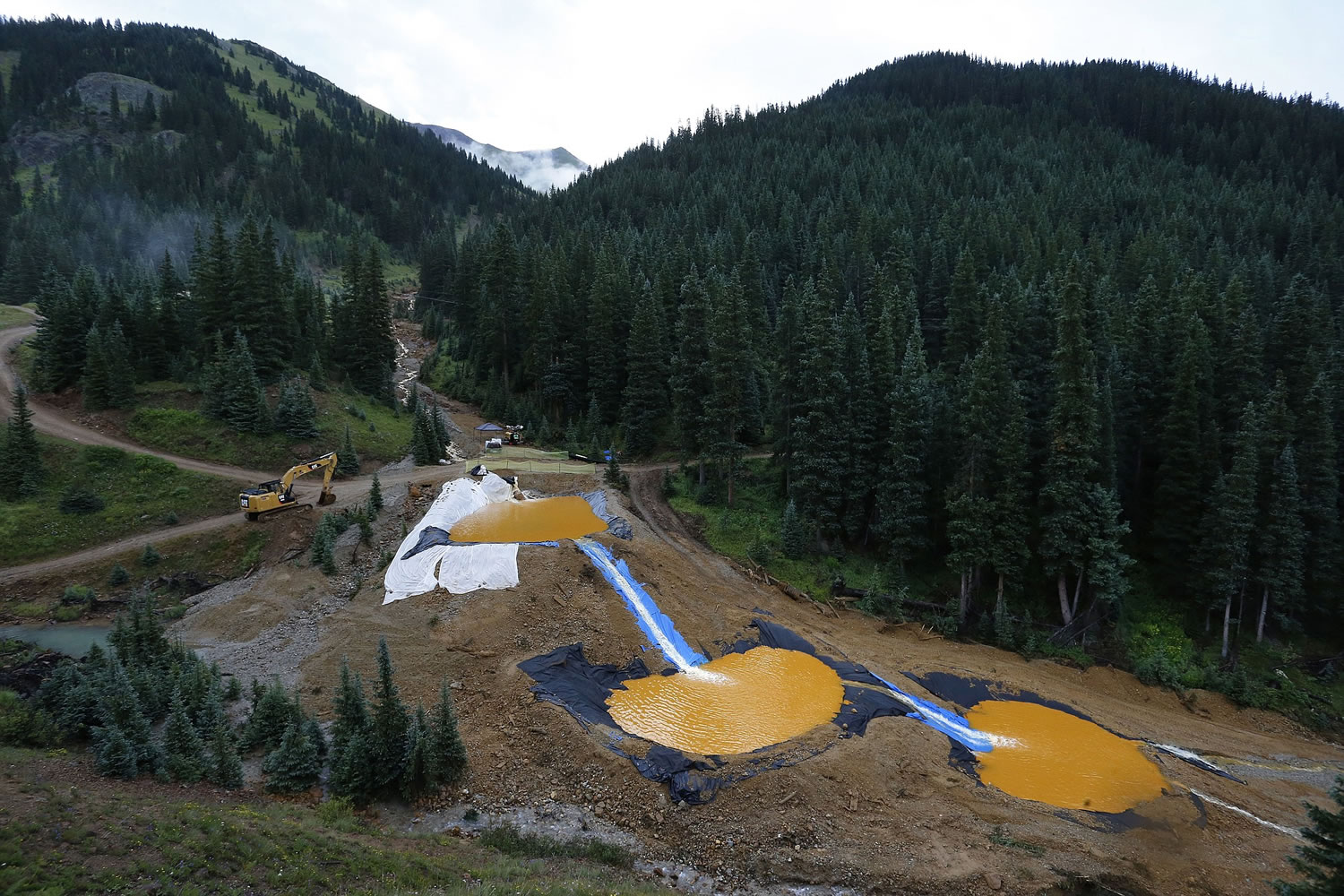BILLINGS, Mont. — An internal government investigation has found that federal and state regulators underestimated the potential for a blowout from a Colorado mine, documents released Wednesday show.
Investigators concluded the federal Environmental Protection Agency and state regulators underestimated how much water pressure had built up inside the inactive mine before a government cleanup crew triggered the release, according to the documents released by the EPA.
The agency previously offered only impartial information on events leading to the spill.
The Aug. 5 spill involved 3 million gallons of waste from the idled Gold King Mine near Silverton, Colorado, unleashing a torrent of toxic water that fouled rivers in three states.
The Associated Press reported Saturday that EPA managers knew that a large spill was a possibility yet had drafted only a cursory response plan for responding to a spill.
Elected officials have been critical of the EPA’s response. Among the unanswered questions is why it took the agency nearly a day to inform downstream communities that rely on the rivers for drinking water. The agency’s internal investigation did not address that issue.
The wastewater flowed into a tributary of the Animas and San Juan rivers, turning them a sickly yellow-orange color and tainting them with lead, arsenic, thallium and other heavy metals that can cause health problems and harm aquatic life.
The toxic plume traveled roughly 300 miles through Colorado, New Mexico and Utah, to Lake Powell on the Arizona-Utah border.
EPA water testing has shown contamination levels returning to pre-spill levels, though experts warn some of the contaminants likely sunk and mixed with bottom sediments and could someday be stirred back up.
Toxic water continues to flow out of the mine. Since the accident, the EPA has built a series of ponds so contaminated sediments can settle out before the water enters a nearby creek.
The agency said more needs to be done and the potential remains for another blowout.
Separate investigations into the accident are being conducted by the EPA’s Inspector General’s Office and the U.S. Department of Interior.



